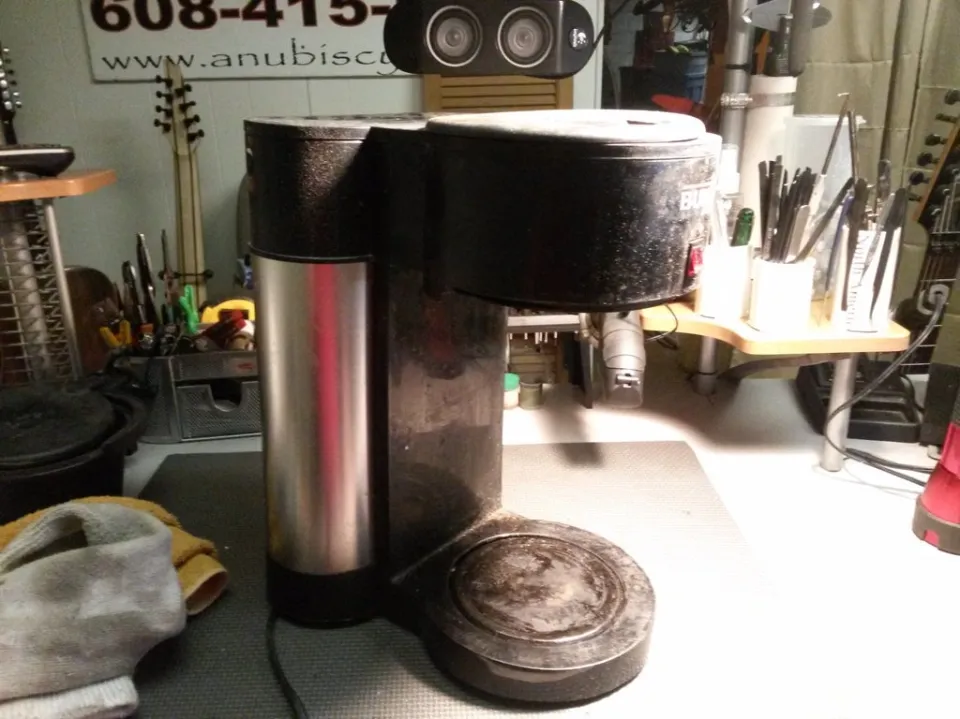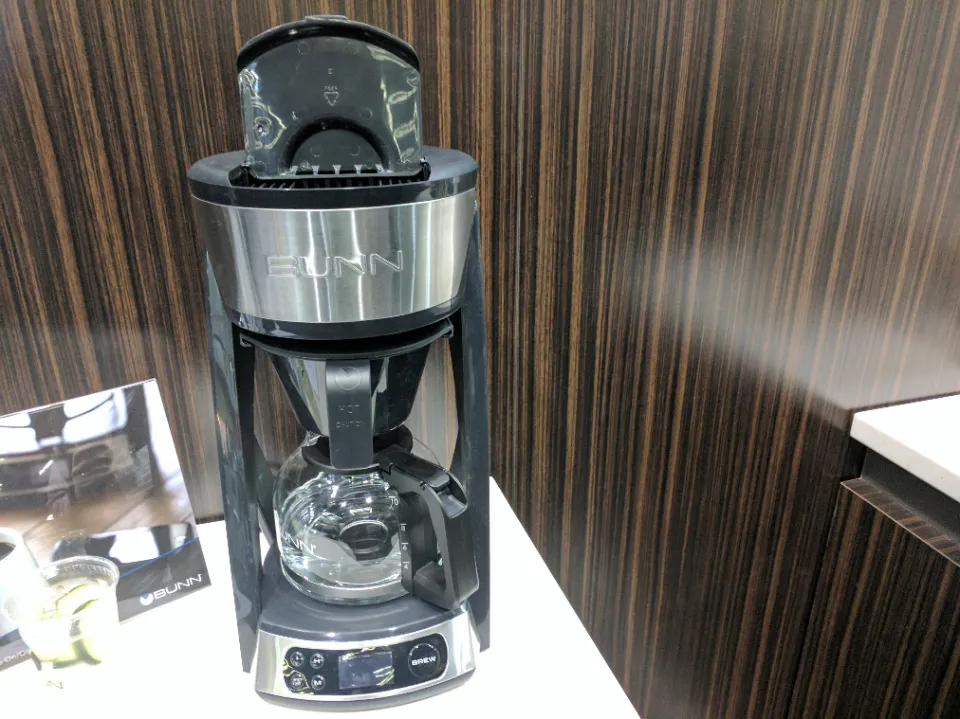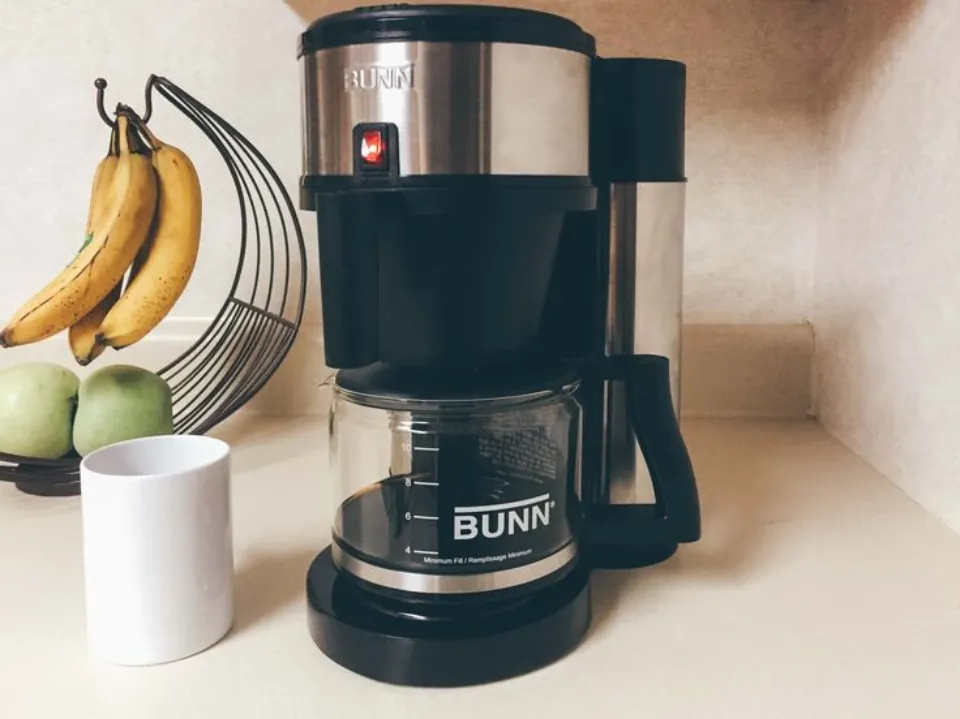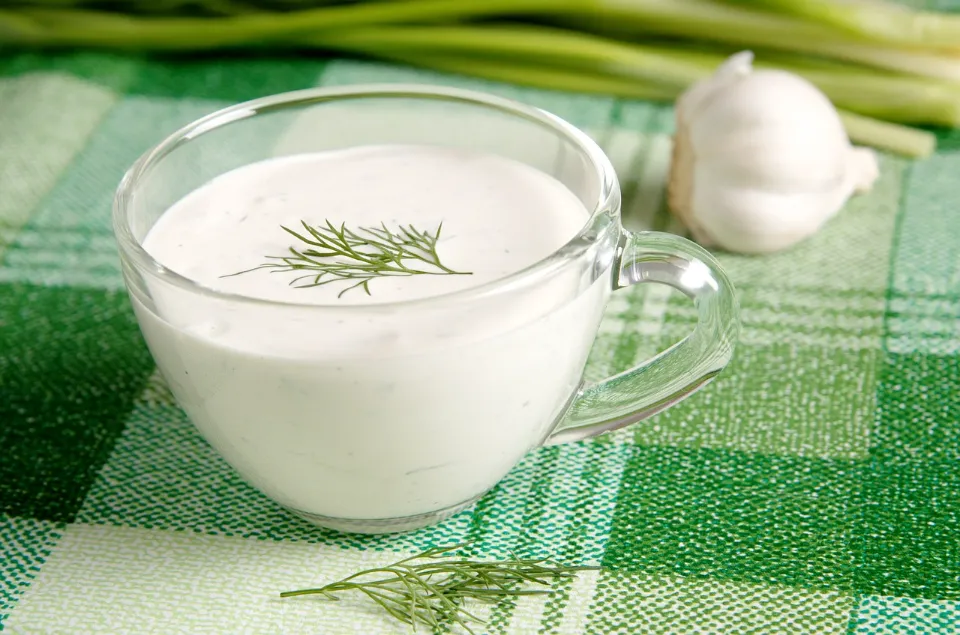Nothing beats a good cup of coffee in the morning, but eventually your coffee starts to brew slowly and tastes bitter. The reason is that your machine has mineral scale buildup inside of it. It’s easy to fix; you just need to get rid of the mineral scale.
The good news is that there is a simple fix to fix your residential Bunn Coffee Maker, so you don’t need to rush out and buy a cup of coffee from a shop.
Without vinegar, you can clean a Bunn coffee maker with baking soda. The coffee maker must also be turned off, unplugged, and allowed to cool before using. The instructions you require for cleaning a Bunn coffee maker to maintain the quality of your coffee are provided below.
Quick Step to Clean a Bunn Coffee Maker

- Step 1: Turn the Machine Off
- Step 2: Remove Coffee Grounds and Coffee Filter
- Step 3: Wipe Down the Exterior
- Step 4: Clean and Soak the Carafe
- Step 5: Clean the Spray Nozzle
- Step 6: Clean the Spray Tube
Why You Should Clean Your Coffee Maker
There are many justifications for routinely cleaning your coffee maker. From a shorter brew to fewer bacteria, you can significantly benefit from a purified machine. Here are a few:
- Faster Brew Time
Your coffee maker’s water flow can become backed up when mineral deposits and scaling accumulate inside of it. As a result, your coffee will take longer to brew and drip. However, a clean machine will allow a steady flow of water and give you a quick cup of coffee to start your day.
- Proper Function
The flow of water required to brew your coffee can be hampered, as was already mentioned, by scaling buildup. Having a problem with the machinery is caused by a lack of water flow. A spotless coffee maker will work well and accurately.
- Better Tasting Coffee
No one likes a bitter cup of coffee, and filthy coffee makers are often the culprits. The internal thermometer of some machines can be damaged. A less-than-flavorful experience may result from the temperature not being hot enough.
- Longer Lifespan
In the long run, cleaning your Bunn coffee maker will safeguard the equipment, giving you the chance to use it for many years to come.
- Lower Risk of Bacteria
When brewing coffee, your coffee maker makes use of both heat and moisture. As a result, your machine is a haven for the growth of bacteria, yeast, and, occasionally, mold. Those who are allergic may experience allergic reactions from this, and it may even result in infections.
Helpful Tips to Prevent Coffee Maker Germs
- Remove the coffee grounds, throw away the filter after each use, and dry with a clean towel or paper towel.
- For a clean brew the following morning, rinse and soak the carafe in warm, soapy water.
- Open the top cover of your coffee maker to air it out and dry the moisture that could cause mold.
- For a more thorough clean, place your carafe and basket in the dishwasher after each use.
- After each use, clean the handle with warm, soapy water or a disinfectant.
How to Tell If Your Coffee Maker Needs to Be Cleaned
A thorough cleaning of your coffee maker is indicated by a number of signs that can be seen if you pay attention. It is best practice to establish a routine for cleaning your coffee maker and to follow it each time you brew. A broken machine and bad coffee taste can result from ignoring these signals.

Here are a few common things you should watch out for:
- Your coffee is awful.
- The coffee maker’s interior is stained.
- To finish brewing, you must wait a long time.
- You notice chalky material anywhere on the inside of your machine.
- The water is sputtering into the carafe rather than flowing freely, as you can see and hear.
- The usual volume of coffee being produced by your coffee maker isn’t happening.
How to Clean a Bunn Coffee Maker
It’s a good idea to clean the coffee maker after each use and to remove the coffee grounds from the basket. It’s recommended that you do a deep descaling coffee maker cleanse every three months. The amount you use it and the amount of minerals in the water you’re using will determine how much this happens.
Standard Cleaning Method
The steps needed to clean your Bunn coffee maker using the traditional method are listed below. Every day or every time you use your machine, you should perform this process.
Step 1: Turn the Machine Off
Before unplugging the machine, wait to start cleaning. You shouldn’t risk electrocution, so this is a crucial step. It’s possible that water from the machine or carafe’s previous use is still present after the cleaning process.
Step 2: Remove Coffee Grounds and Coffee Filter
If you have a filter, dispose of it along with the coffee grounds, then rinse the basket to remove any leftover grounds.
Step 3: Wipe Down the Exterior
Take a soft cloth and submerge it in warm water that has been diluted with a very small amount of dish detergent that isn’t too strongly scented. Clean off your machine’s exterior. Then, take another damp cloth without soap and wipe your device to get rid of any soap residue.
Step 4: Clean and Soak the Carafe
Sometimes you’ll see brown rings inside the carafe. With a thorough soak in some soapy water, you can get rid of this because it is normal. Fill the carafe with warm, soapy water after wiping the inside with a washcloth. Let it sit for a few hours, rinse, and allow it to dry.
Note: Other options for cleaning the carafe include using a vinegar solution, washing with baking soda, or putting it through the dishwasher.
Step 5: Clean the Spray Nozzle
The spray nozzle that releases water trickles out of most coffee makers. Disassemble the spray head and check for obstructions. To get rid of the mineral buildup or coffee grounds, use a tiny object like a toothpick. The nozzle should then be cleaned with mild dish soap and warm water using a cloth.
Step 6: Clean the Spray Tube
A metal or plastic tool to clean the spray tube is included with some Bunn models. Simply take away the spray nozzle and brew funnel first. Next, place the cleaning tool inside the tube and slowly rotate it while pushing it up and down. Reassemble the brew funnel and reattach the spray nozzle once all deposits have been eliminated.
Deep Cleaning Method
When was the last time you cleaned the coffee maker’s scale? Or perhaps you’re someone who doesn’t even understand what that means. Don’t worry; this is a no-judgment zone!
Calcium and magnesium deposits will eventually form on the interior of your machine (typically near the thermometer) whether you use filtered water, mineral water, bottled water, or tap water. Descaling is the process of removing this chalky buildup called “limescale.”
When the minerals in the water heat up, thick layers of oxide begin to form that can backup your water flow, reduce the flavor of your coffee, and over time, damage the machinery. You might experience heating problems, clogging, or simply a bad cup of coffee (which is the last thing you want after waiting patiently for it to brew).
Deep cleaning is certainly not something you should do every day, but if you use your coffee maker frequently, you should try to do it about once every three months. Here are a few easy steps you can follow to learn how to deep clean your Bunn coffee maker:
Step 1: Mix Your Solution
Pour ½ to 13 cup of vinegar and ½ to 2/3 cup of distilled water into a bowl, depending on the Bunn model you own.
Step 2: Start Your Brew
The water reservoir should now contain the vinegar and distilled water mixture. After that, start the brewing process. Pour the solution into the water-filled carafe, then shut off the coffee maker. To effectively remove limescale from the interior, give the solution about two hours to soak in the reservoir.
Step 3: Wipe Down the Spray Nozzle and Tube
Remove the spray nozzle’s screw, clean it with a wet, soapy cloth, and use a toothpick or another small object to scrape off deposits. Then, rinse with warm water. Clean the spray tube with your metal or plastic deliming tool as mentioned in the standard cleaning instructions above.
Step 4: Start Brew
Spray head and spray tube included, reassemble each component. Turn on the machine and fill your water reservoir with distilled water. Brew another cycle. Doing this will eliminate any vinegar odor left behind by the solution. Repeat this procedure until there is no longer any odor to be detected.
Best Cleaning Solutions
Lemon juice, baking soda, and vinegar are three rockstar cleaning ingredients that are safe and effective to use on your machine. Dish soap that is mild or unscented is also a great choice, but only when it comes to cleaning the machine’s or carafe’s exterior.
See why these organic cleaners are the best for coffee makers.
Lemon
One of nature’s most effective sanitizing agents, lemons are known for their extreme acidity. Its antibacterial qualities enable it to remove hard water stains and sediments from your coffee maker. As an added bonus, it will also leave behind a lovely citrus scent.
Vinegar
An efficient cleaning solution for frequently used appliances like a coffee maker is vinegar. It can simultaneously decalcify the inside of your machine, get rid of residue, and disinfect it.
Baking Soda
Because it is inexpensive and useful around the house for a variety of tasks, baking soda is another popular option for cleaning your coffee maker. This cleaning tool cleans the coffee maker’s surface while also killing bacteria, getting rid of odors, and removing stains.
You can clean your coffee maker in a variety of ways, and you can even mix these cleaning solutions to produce a more powerful solution. One option is to mix equal parts lemon juice with equal parts baking soda. You will quickly clean your machine with this deodorizing and disinfecting paste, leaving you with a fresh coffee maker and peace of mind.
A different workable solution is to combine about ½ cup of vinegar with about 18 cup of baking soda (amounts may vary and depend on your specific model). It’s best to leave these two potent cleaners on the surface for as long as possible. You’ll be able to tell it’s working when you see the fizzing.
Read More: 5 Best Iced Coffee Makers (2023 Reviews)
What to Avoid When Cleaning Your Coffee Maker

There are a few things you should stay away from even though it’s a wonderful thing to take the initiative and develop the habit of cleaning your coffee maker.
- Avoid using cleaning supplies that contain chemicals. This could damage both the machine and you.
- Don’t start the cleaning process without first referring to your Bunn coffee maker’s instruction manual, as there could be some specific directions included that you don’t want to miss.
- Disassembling any components not covered in this article could result in more confusion (and mess) than necessary.
- Don’t use soaps with intense scents, as this can transfer to the coffee grounds and ruin the taste.
- Cleaning your machine while it’s plugged in or still hot is dangerous and should be avoided.
Also Read: How to Clean a Ninja Coffee Maker
Final Thoughts
We’ve walked you through the basic steps of how to clean a Bunn coffee maker. Hopefully, you’re feeling confident enough to take on the task. You’ll be on your way to a sparkling, spotless machine and delectable cups of coffee once you’ve mastered the procedure.
Keep in mind that the more you maintain your coffee maker, the less deep cleaning you’ll need to perform and the longer you can use it.
The safest way to clean machines like this is always with natural cleaning ingredients because they can disinfect without using dangerous chemicals that harm both your machine and your body. And keep in mind that one of the most critical safety tips is to make sure you unplug your coffee maker before cleaning. Safety first!
FAQs About Cleaning a Bunn Coffee Maker
How Often Do You Clean a Bunn Coffee Maker?
You’ll want to complete the regular clean daily or whenever you make a pot of coffee. Unless you have hard water, you will only need to thoroughly clean, descale, and delime your coffee maker every three months. Hard water has more minerals in it causing machines to need to be cleaned more often.
How Do You Clean a Bunn Coffee Maker Without Vinegar?
Without vinegar, a Bunn coffee maker can be cleaned with baking soda. You will need to add ¼ cup of baking soda for each cup of water. Then follow the instructions for cleaning a coffee maker with vinegar.
When you’re done cleaning, be sure to thoroughly rinse the baking soda out of the machine because it will give your coffee a strange flavor.
Lemon juice can also be used as an alternative to vinegar when cleaning a Bunn coffee maker. Simply replace the vinegar with lemon juice, and follow the instructions. As the lemon does not leave an off flavor in your coffee, cleaning the coffee maker will be much simpler.
How to Tell If Your Coffee Maker Needs to Be Cleaned
You can tell if your coffee maker needs to be cleaned if it’s taking a long time for coffee to brew or if your coffee tastes bitter. It’s time to give your coffee maker a thorough cleaning and descale it.








